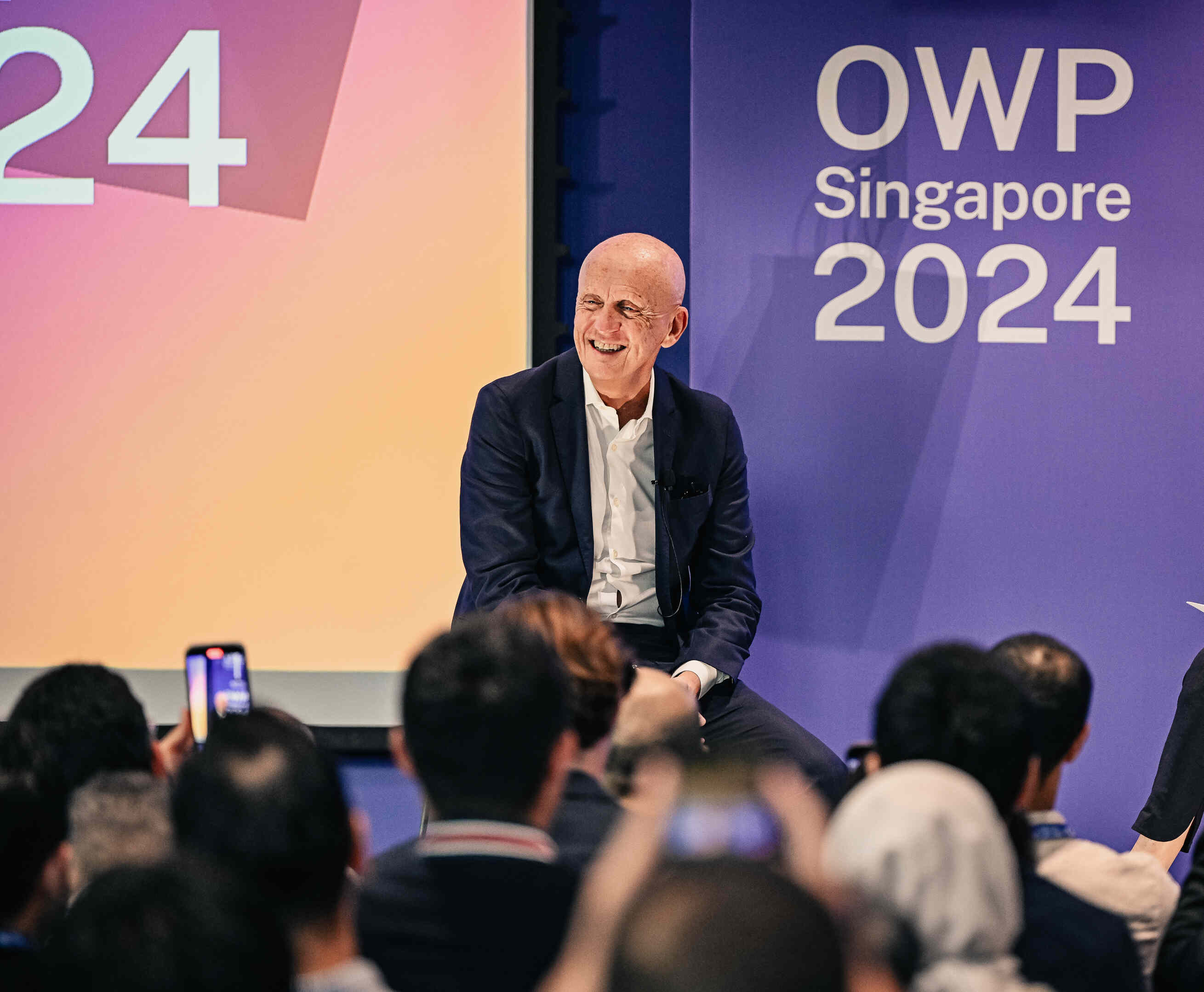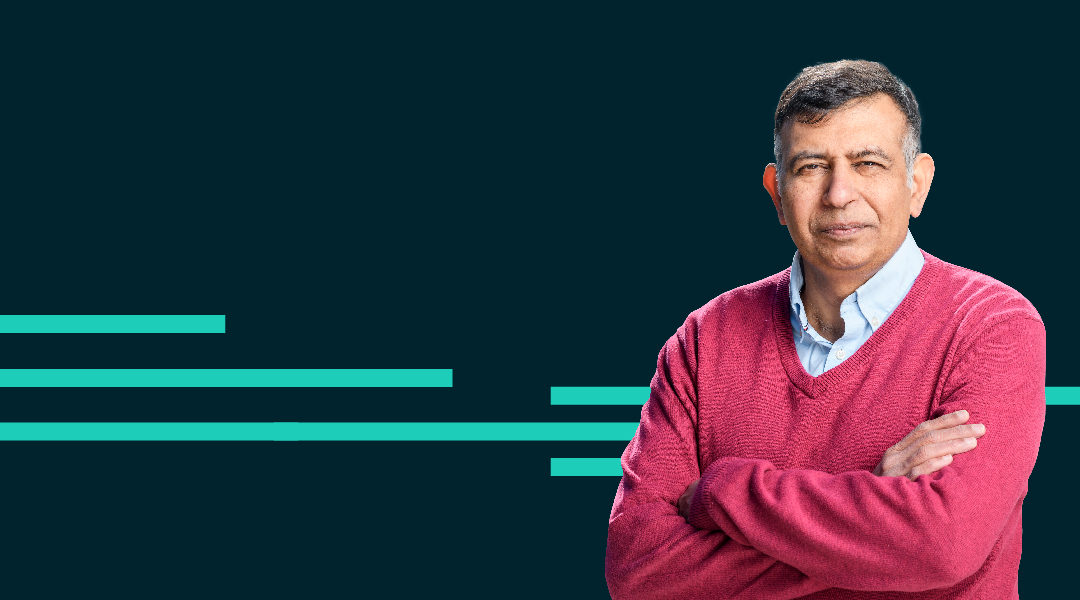Almost 100 executives attended an IMD Discovery Event that explored the topic of global leadership. In a highly interactive session, the participants – senior managers from a variety of companies and industries – applied theoretical tools and principles to their personal business challenges and co-created new insights on what individuals and organizations can do to build global leaders and successful global teams.
As a global leader you are facing unprecedented complexity in an increasingly globalized world. How do you make sense of the different cultures you engage with? How do you manage these differences, particularly when you have to work in leadership teams? How do you manage the tension between complying with your company’s global norms and responding to local preferences? How can you enhance your effectiveness as a leader when your team members come from multiple nations and are dispersed across the globe? In this insights@IMD we examine the topic of global leadership.
Variety and connectivity
Global leadership can be defined as leading interdependent people and processes that stretch beyond national borders, either implicitly or explicitly. A global leader is not just the executive leading a global organization – any executive tasked with integrating the work of individuals or teams dispersed across multiple geographies is a global leader. Traditionally, many multinationals have focused on the issues of differentiation and integration across the diverse country environments in which they operate, asking: (1) how do we differentiate our strategy to maximize the organization’s responsiveness to the uniqueness of the local environment; and (2) how do we coordinate, or integrate, our activities across those countries to maximize synergy?
In today’s complex global business environment, most multinational organizations have strategies that aim to include both differentiation and integration. So, according to Professors Martha Maznevski and Charles Dhanaraj, these two dimensions are less helpful than they used to be in defining leadership priorities. Today, global leadership can be more accurately defined by examining variety and connectivity.
Variety can be defined by determining the number of different environments in which you lead. This could include variety in cultures, relevant technology, legal and political infra-structures, competitors’ business models and customer segmentation dimensions. The more environments and contexts you lead in (and must be physically present in), and the more different they are from one another, the more variety there is in your global leadership role.
Connectivity can be understood as the interdependence between the people you lead, or the extent to which you need to bring others to connect and respond to one another across boundaries. The higher the intensity and frequency of connectivity, the more global your leadership role is. This is not necessarily about connecting technology, although technology could be the means for connecting. It is about connecting people.
Variety tends to be a structural condition that is inherent in the job description, which means that global leaders naturally tend to focus on the differences in the variety. Yet while connectivity can be a structural condition, it can also be a leadership choice: global leaders have more discretion when it comes to deciding how to create interdependent relationships within and across their teams. All things being equal, variety requires more interactions to manage than connectivity does, while connectivity requires more complex interactions than variety does. Many executives – especially those promoted from a country general manager role to a global VP role – find themselves in endurance leadership mode, running around the world meeting everyone and visiting sites in order to create alignment and direction. If they choose to create higher connectivity – interdependence between the different areas of their responsibility – the level of complexity increases, but they have to harness the synergies brought by interdependence to become more efficient. Most global leaders are experienced in leading variety, but fewer are comfortable leading for connectivity. Maznevski and Dhanaraj explain that connectivity is the next frontier for global leadership effectiveness.
Leading for connectivity
Today’s complex, competitive and interdependent environment is creating a greater need for connectivity to achieve competitive results through working with people. More connectivity can bring strategic benefits, but it requires coordination, and it is up to individual global leaders to decide whether it would be beneficial to lead with more connectivity in their specific context and move toward high-intensity and complex global leadership roles.
What does it take to lead with higher connectivity in an environment where there is also variety? The professors introduced the TACK (trust, ambition, communication and knowledge) model as a guide to leading with connectivity. Global leaders need to ask themselves:
- Trust: Do we believe the other(s) will fulfil their commitments to the team and the organization? Are they reliable?Do we believe the other(s) will act in the best interests of the team and the organization, even in the absence of clear guidance?
- Ambition: Do we hold high ambitions for our goals, and are we committed to these ambitions, individually and as a team? This goes beyond merely meeting targets.
- Communication: Do we communicate with one another regularly, frequently and openly? Are we mindful? Do we really listen to one another and understand things from the others’ perspective?
- Knowledge: Do we share a common idea about what we are doing and why it’s important? Do we share deep understanding of one another’s contexts and the implications for our collective task?
Global leaders who want to lead with more connectivity need to develop TACK. The TACK elements are mutually reinforcing and are not sequential – you cannot focus on one this week, then another the next; you need to work on them simultaneously and connect them together. This means that it doesn’t matter where you start – it is your choice and depends on how you read the situation. The balance of TACK elements also varies depending on the context. For example, endurance leadership requires one-to-one TACK between the leader and each team member, which is more time-intensive for the leader and contributes to the need for high endurance. High-intensity leadership requires TACK among all team members, which is more difficult to build but creates energy and action across the team.
Developing TACK
Most thoughtful global leaders have at least some TACK. And they often know that something is working, but not necessarily why it is working. This means they do not know how to prioritize, are unable to repeat the high performance consistently across contexts, and may be missing opportunities.
Global leaders can develop more TACK in two ways: (1) by developing their own individual global leadership competences; and (2) by increasing organizational support.
Individual leadership competences
Four fundamental and underlying leadership competences can prepare you to lead with TACK. These competences also help you adapt appropriately to new situations yourself.
- Perception management: Taking in new information and analyzing it according to open and adaptive criteria; effectively dealing with ambiguous situations; learning quickly.
- Relationship management: Building and maintaining positive relationships with others who are different; being aware of your own impact on others in intercultural interactions. This is not just about being an open and charismatic person – it is at a deeper level of building strong interpersonal relationships to help weather the difficult times.
- Self-management: Coping with adversity; adapting and changing in positive ways while retaining a stable self-identity; caring for yourself in a mentally and emotionally healthy way.
- Moral management: Being able to analyze the moral and ethical dilemmas of diverse values and to act according to a clear set of high-integrity values.
Developing new global leadership competences combines motivation to learn and transform yourself; opportunities for challenging and transformational experiences that are important to you, as well as being complex, difficult and emotional, and that allow you to compare and contrast with your previous experiences; and the hard work of extensive practice, experiential learning and reflection every day.
Organizational support
Four organizational drivers can support you in leading with TACK. These drivers also help the organization build change capabilities.
- Organizational structure: Clear lines of authority and accountability (even in a matrix) are essential. Many formal and especially informal lateral linkages should be encouraged and reinforced.
- Technology and presence: Common platforms are required to store and share documents and track progress. It is important to take into account countries’ infrastructures, but once a platform has been chosen, you should use it. Setting regular times to get together face-to-face is key to building TACK – keep the “heartbeat” of the team beating by holding meetings at consistent and appropriate time intervals and not only when there is a crisis. Meeting frequency depends on the fitness of the team and the difficulty of the task.
- Performance management: Set goals, provide feedback and find ways to measure and reward TACK interactions over a longer timescale.
- Development: Develop individuals and teams through formal education, exposure, experience, coaching.
How IBM engages the workforce of a globally integrated enterprise
The multinational IBM provides strong organizational support and structured opportunities for its employees to develop as global leaders by focusing on the following:
Organizational structure: Country general managers each have an advisory task force of senior executives from other countries (the Global Enablement Team). A common National Account Methodology must be followed everywhere and reinforces local needs as part of the methodology.
Technology and presence: Technology to support the clear “Find –> Know –>Work” sequence. They use pioneering technologies like crowd-sourcing “jams” and emphasize the importance of building relationships face-to-face when possible.
Performance management: As well as business results, process indicators are measured, for example the number of ideas shared and implemented, relationships built, leaders developed.
Development: A three-part approach following the 70/20/10 rule that includes experience (learning through work tasks and assignments, 70% of the emphasis), exposure (learning through others, 20%) and education (learning through formal programs, 10%).
To increase organizational support for the development and practice of TACK, you need to simplify and amplify. This means having assertive simplicity on a few key drivers, including the principles of coordination and connectivity (e.g. clear mission and value proposition, values and organizational culture, simple and clear authority and responsibility, some core processes). It also means amplifying by encouraging variety and empowering your team to promote interconnectivity, which can be done by increasing informal networks and collaboration; facilitating innovation in decision making; coaching, asking questions, developing people and alternatives, and connecting people with one another; and encouraging diversity in “how.”
Takeaways
Throughout the day, participants shared their experiences on the different ways to build global leadership competences and co-created new insights (see box). Overall, the event emphasized that being a global leader in complex global environments goes way beyond dealing with cultural differences. Global leaders and organizations are encouraged to increase connectivity and build more TACK to become more efficient and effective.





